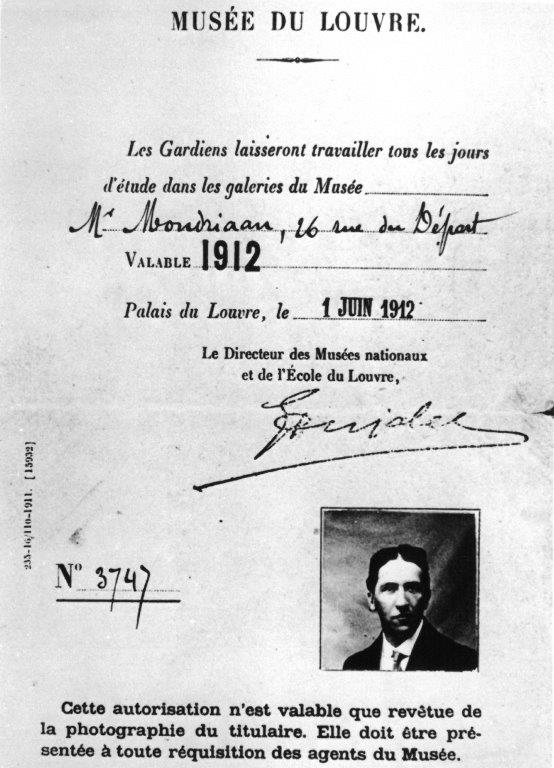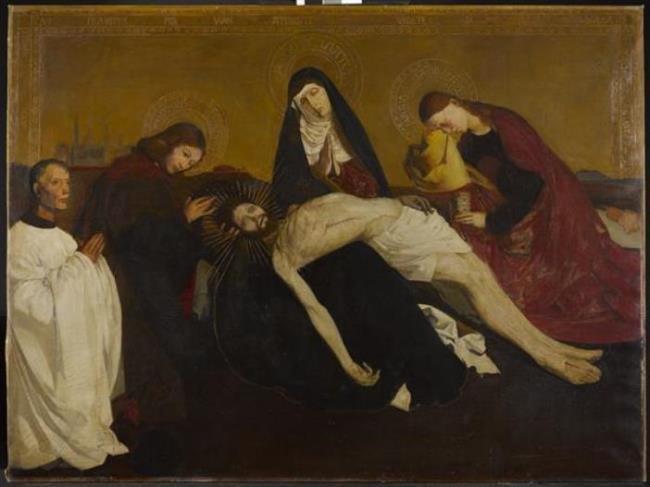by Laurens Kleine Deters

Two letters from Mondrian were recently found in the Amsterdam City Archives. The letters date from October 1904 and July 1908, and were addressed to the committee of the Society for the Creation of a Public Collection of Contemporary Art in Amsterdam (Vereeniging tot het Vormen van eene Openbare Verzameling van Hedendaagsche Kunst te Amsterdam, VVHK), which was better known at the time as the ‘society with the long name’. Up to this point only two picture postcards by Mondrian were known from 1904, and from 1908 a handful of letters and postcards. These recently discovered letters throw light on one of Mondrian’s less well-known and little researched activities: the painting of copies.

The VVHK and Mondrian
The VVHK society was established in 1874 by a group of wealthy Amsterdammers, and its aim was to gather and present to the public a representative selection of contemporary French, and especially Dutch masters. The VVHK and similar organisations in other cities were in a way a direct reaction to the notorious article by Victor de Stuers, titled ‘Holland op zijn smalst’ (Holland at its narrowest) (1873), accusing the government of having an entirely passive policy for the arts. The collection soon included important works by Breitner, Courbet, Daubigny, Israëls, Jongkind, Mauve and Mesdag. In 1895 the collection was housed in the newly created Stedelijk Museum. The paintings purchased by the VVHK still form part of the core collection.
The envelope that contained Mondrian’s first letter to the committee has not been preserved, but given the addressee (‘The Right Honourable’) it was clearly intended for Jan Six, secretary of the society. The letter is written on paper from the St Lucas Artists’ Association in Amsterdam, of which Mondrian was secretary from June 1904. They knew one another from the Rijksacademie, where Six had given Mondrian lessons in aesthetics and art history. Mondrian asked permission from the VVHK to copy Willem Maris’s painting Summer Opulence, the result of which would measure ‘84 cM. by 106, being 1 cM smaller than the original’. The explicit mention of a difference in dimensions of his canvas may seem surprising, but is in fact something that is often encountered in requests held by the VVHK’s archive. Probably it was a requirement of the society, to ensure that the copy could not pass for the original.
In July 1908 Mondrian again submitted a request to copy a painting belonging to the VVHK. This time it was for the large After the storm by Jozef Israëls [fig. 2]. It is interesting that Mondrian asks to be allowed to ‘begin as soon as the person who is currently copying this work has finished with it’. Perhaps he is referring to the etcher Hendrik Sluyter, who made a large print after the painting.
With neither request do we know if the VVHK gave permission, nor, if so, whether Mondrian actually made these copies. A further question that remains unanswered is who commissioned these two copies? This puts a broader problem with documenting Mondrian’s oeuvre right under the spotlight: we have little idea who ordered copies from Mondrian, nor do we know if the resulting paintings have even survived. It should also be noted that – with one exception – none of the copies known to have been made are included in the catalogue raisonné published in 1998. They will therefore shortly be added along with a number of new attributions to the digital catalogue raisonné which is maintained by the RKD.

Copying to make a living
As with the gouaches and small flower paintings which he carried on making into the 1930s, copying works by old and modern masters provided Mondrian with a means of keeping his head above water. As early as 1895 his name appears in the register of copyists working in the Rijksmuseum. That year he copied In the month of July by Paul Gabriël, Girl knitting by Bernard Blommers and Double blank by Petrus van der Velden. Some years later he copied more paintings in the Rijksmuseum, including works by Nicolaas Maes and The parrot cage by Jan Steen.
Up until 1918 there are regular mentions of copies on which Mondrian was working, in correspondence with, for example, Aletta de Iongh, Lodewijk Schelfhout and Willem Steenhoff, but unfortunately they rarely go into any detail. There is only one case in which we know both the person who commissioned the copy and the painting: in summer 1912, working for the Hague collector Marie Tak van Poortvliet, he copied the celebrated fifteenth-century painting Pietà de Villeneuve-lès-Avignon by Enguerrand Quarton in the Louvre (C154) [fig. 1, 3]. In 1984, after a period in private hands, the copy eventually entered the Kunstmuseum in The Hague, and is now one of the few tangible pieces of evidence of Mondrian’s activity as copyist.